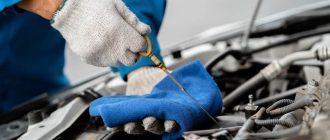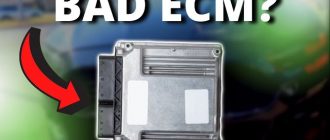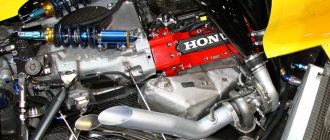- Why Engine Light is On in Car
- 1. Oxygen Sensor Issues
- 2. Catalytic Converter Problems
- 3. Spark Plug Problems
- 4. Ignition Coil Problems
- 5. Mass Airflow Sensor Problems
- 6. Exhaust Gas Recirculation (EGR) Valve Problems
- 7. Fuel Injector Problems
- 8. Transmission Problems
- 9. Electrical Problems
- 10. Other Problems
- What to Do When the Engine Light is On
- Conclusion
Why Engine Light is On in Car
1. Oxygen Sensor Issues
The oxygen sensor measures the amount of oxygen in the exhaust gases. This information is used by the engine computer to adjust the air-fuel mixture. If the oxygen sensor is faulty, it can cause the engine to run rich or lean, which can trigger the check engine light.
2. Catalytic Converter Problems
The catalytic converter is a device that helps to reduce emissions by converting harmful pollutants into less harmful substances. If the catalytic converter is damaged or clogged, it can cause the check engine light to come on.
3. Spark Plug Problems
Spark plugs provide the spark that ignites the air-fuel mixture in the cylinders. If a spark plug is faulty, it can cause the engine to misfire, which can trigger the check engine light.
4. Ignition Coil Problems
The ignition coil provides the electrical current that is used to create the spark in the spark plugs. If the ignition coil is faulty, it can cause the engine to misfire, which can trigger the check engine light.
5. Mass Airflow Sensor Problems
The mass airflow sensor measures the amount of air that is flowing into the engine. This information is used by the engine computer to calculate the correct air-fuel ratio. If the mass airflow sensor is faulty, it can cause the engine to run rich or lean, which can trigger the check engine light.
6. Exhaust Gas Recirculation (EGR) Valve Problems
The EGR valve helps to reduce emissions by recirculating a portion of the exhaust gases back into the engine. If the EGR valve is faulty, it can cause the engine to run rough or stall, which can trigger the check engine light.
7. Fuel Injector Problems
Fuel injectors spray fuel into the cylinders. If a fuel injector is faulty, it can cause the engine to run rich or lean, which can trigger the check engine light.
8. Transmission Problems
Transmission problems can also cause the check engine light to come on. For example, if the transmission is slipping or not shifting properly, it can cause the engine to run at higher RPMs, which can trigger the check engine light.
9. Electrical Problems
Electrical problems can also cause the check engine light to come on. For example, if the alternator is not charging properly, it can cause the battery to discharge, which can trigger the check engine light.
10. Other Problems
There are a number of other problems that can also cause the check engine light to come on. These problems can include:
- Engine oil problems
- Coolant problems
- Vacuum leaks
- Computer problems
What to Do When the Engine Light is On
If the check engine light comes on, it is important to have the problem diagnosed and repaired as soon as possible. Driving with a check engine light on can damage your engine and other components of your car.
Here are some tips on what to do when the check engine light comes on:
- Check your owner’s manual to see if there is any information about what the check engine light means.
- Have the problem diagnosed by a qualified mechanic.
- Repair the problem as soon as possible.
Conclusion
The check engine light is a warning system that can help you identify and fix problems with your car. If the check engine light comes on, do not ignore it. Have the problem diagnosed and repaired as soon as possible to prevent further damage to your car.




